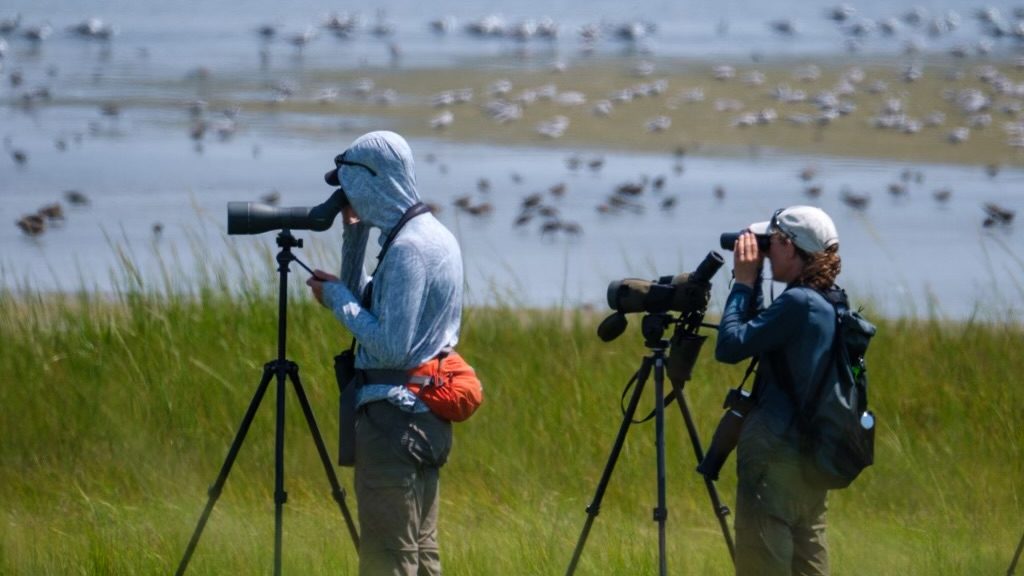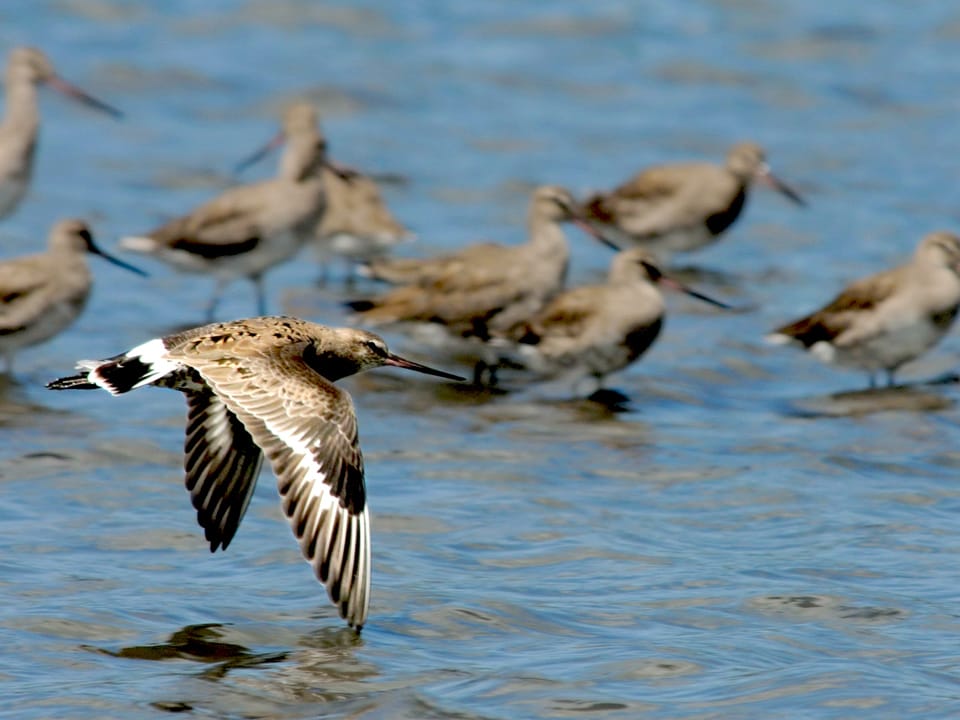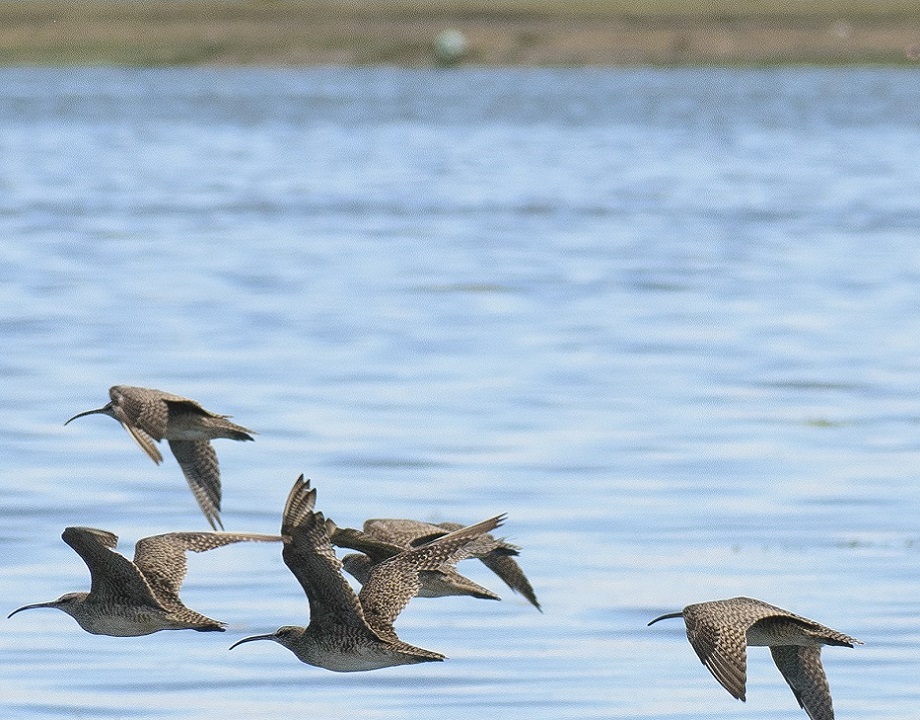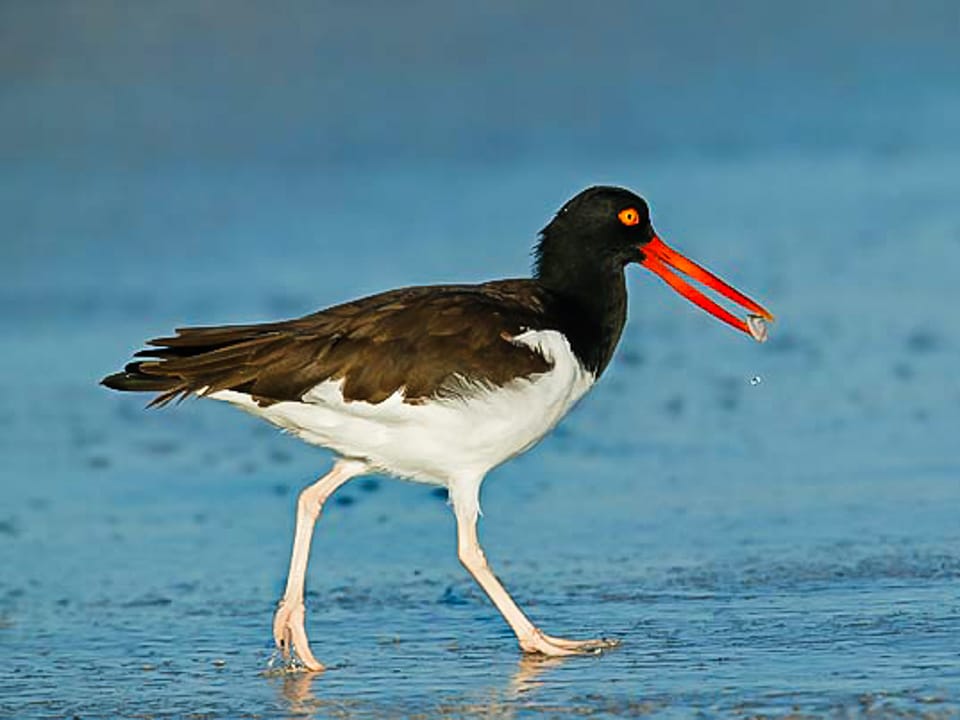Newly released data shows most shorebird species in North America have lost more than half their population numbers in recent years. As steep downward trends continue, researchers are asking for formal evaluations and a targeted increase in conservation efforts.
MEDIA CONTACT: Isa Morton, isa@seekseva.com
READ IN SPANISH/LEA EN ESPAÑOL | READ IN DUTCH/LEES DIT IN HET NEDERLANDS
PLYMOUTH, MA – A new study published in the journal Ornithological Applications unveils that since 1980, nearly all shorebird species along the Atlantic Coast of the U.S. and Canada have experienced steep declines, with many losing more than 50% of their population over the last three decades.
Noting an accelerated decrease among these populations, Manomet is launching a call to action for state and federal wildlife agencies and conservation organizations to unite in a sweeping wave of actions to reverse population-level declines in 28 species of shorebirds. The researchers are asking the federal government to invest in programs that have proved successful, such as an American Oystercatcher Initiative funded by the National Fish and Wildlife Foundation (NFWF), and to establish additional investments in conservation efforts to prevent more birds from being added to the Endangered Species list.
“While the trajectory of these declining numbers is alarming, it is important to emphasize that concerted conservation efforts can have a tangible positive impact,” says coauthor of the study Stephen Brown, vice president of science at Manomet. “Targeted resources committed to recovery do work, so recovery is possible. If we can collectively focus and fortify conservation resources, it is possible to change direction.”
From 1980-2019, scientists and volunteers with Manomet’s International Shorebird Survey, the Atlantic Canada Shorebird Survey, and the Ontario Shorebird Survey monitored and documented the activity of 28 different shorebird species across North America. The now-published research reveals that during that span of nearly 40 years, 26 of the 28 shorebird species analyzed were found to be declining with strong evidence that 13 of those species are now declining even faster than previously.
Additional facts and considerations
• For the 28 species studied during the 39 years of this study, volunteer surveyors observed nearly 70 million shorebirds, completed over 80,000 surveys, and annually visited nearly 4,000 location sites during fall migration periods.
• While the declines are widespread, they are most pronounced in parts of Atlantic Canada and the eastern U.S. — the region that has lost the greatest amount of vital coastal habitat over the years.
• Shorebirds embark on some of the longest annual migrations of any animal on the planet and depend on food resources and habitat availability to successfully complete their journey.
• Multiple factors can affect shorebird populations. Factors believed to be contributing to the measured declines include the loss of important coastal and interior habitats, human disturbance, unregulated hunting, and oil contamination.
• Negative impacts attributed to our changing climate such as sea level rise, severe drought, warming ocean temperature, and shifts in the distribution and abundance of key invertebrate food resources can also affect shorebird populations.
“It’s important to pay attention to shorebird declines as an environmental indicator of larger changes and understand how we can address current limitations of existing conservation efforts,” shares Lizzie Schueler, Manomet president. “Strategically directed actions combined with long-term commitment has been shown to work well in stemming declines of species. With the accelerated losses we’re witnessing, we need an expanded research footprint, and a significant increase in federal, state, and local conservation commitments. It’s not too late to invest in recovery, but time is of the essence.”
Scientists are proposing that targeted research, particularly studies of survival throughout the year, could help pinpoint where shorebirds are most strongly impacted so that conservation attention can be focused where it is most needed. Formal evaluations of the status of these species are needed, in addition to increased conservation efforts and funding.
Read the full study here | Read Dr. Brown’s blog post on AOS’s Wing Beat here
Manomet is a 501(c)(3) organization that uses science and collaboration to strengthen bird migration routes, coastal ecosystems, and working lands and seas across the Western Hemisphere. For over 50 years, Manomet has formed vital partnerships with businesses, producers, and educators to help ecosystems and human communities thrive together.
###





 Back to all
Back to all


